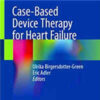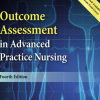Endothelial Activation and Microcirculatory Disorders in Sepsis and Critical Illness
frontiersin.orgThe endothelium is one of the largest organs in the human body and lines the blood vessels and microcirculation of all the vital organs. As such, it functions as a massive and critical surveillance system to orchestrate recognition and host response to pathogens vial pathogen-associated molecular patterns (PAMPs) and endogenous “alarmins” via danger-associated molecular patterns (DAMPs).
Although sepsis research was conventionally focused on deleterious host-mediated inflammatory responses, it is now recognized that endothelial activation/dysfunction affecting vital organs, rather than solely inflammation per se, plays a major biological role in the pathophysiology of sepsis and associated clinical outcomes.
Despite decades of research, sepsis remains a formidable enigma and a major challenge in biomedical research. Individuals who develop sepsis and related conditions continue to experience adverse clinical outcomes and end-organ injury, including acute kidney injury (AKI), acute lung injury and the clinical syndrome of acute respiratory distress syndrome (ARDS), and multiple organ dysfunction syndrome (MODS).

















